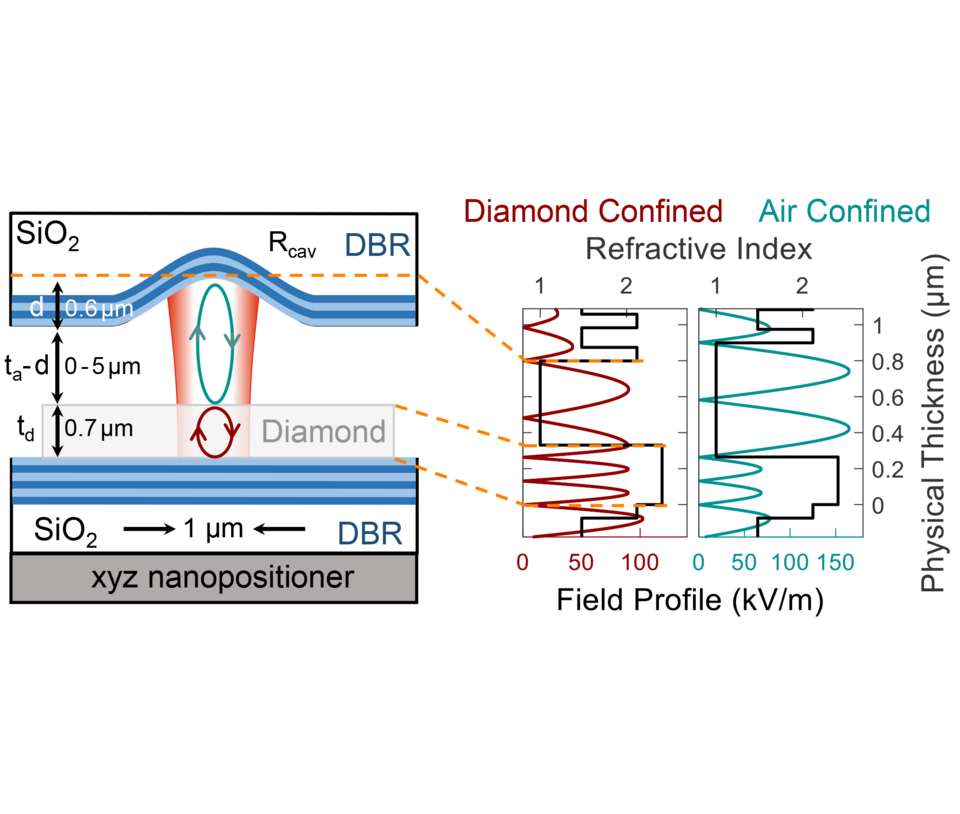Sigurd's diamond microcavity paper published in the Journal of Applied Physics

With a highly coherent, optically addressable electron spin, the nitrogen-vacancy (NV) center in diamond is a promising candidate for a node in a quantum network. A resonant microcavity can boost the flux of coherent photons emerging from single NV centers. Here, we present an open Fabry–Pérot microcavity geometry containing a single-crystal diamond membrane, which operates in a regime where the vacuum electric field is strongly confined to the diamond membrane. There is a field anti-node at the diamond–air interface. Despite the presence of surface losses, a finesse of ℱ=11500 was observed. The quality (𝒬) factor for the lowest mode number is 120000; the mode volume 𝑉 is estimated to be 3.9𝜆_0^3, where 𝜆_0^3 is the free-space wavelength. We investigate the interplay between different loss mechanisms and the impact these loss channels have on the performance of the cavity. This analysis suggests that the surface waviness (roughness with a spatial frequency comparable to that of the microcavity mode) is the mechanism preventing the 𝒬/𝑉 ratio from reaching even higher values. Finally, we apply the extracted cavity parameters to the NV center and calculate a predicted Purcell factor exceeding 150.
Quick Links
